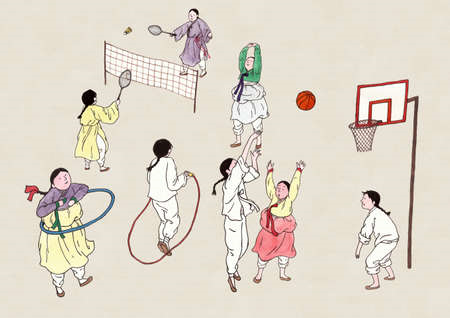Soccer is a sport that has been played around the world for over a century. It is a simple game that is easy to learn and enjoy.
In China, a version of football was called Tsu Chu and was first played during the Han Dynasty (206 B.C.-220 A.D). This was a game that may have been a training exercise for soldiers.
Origin
Tsu chu is believed to be the earliest form of football, and was played around 2300 BC in China. It is a game that involves kicking a leather ball stuffed with feathers through an opening into a net.
The game is thought to have been a training exercise for soldiers in the Tsin Dynasty (255-206 BC), but it was also played for fun in wealthy cities. The earliest mention of tsu chu appears in military manuals from that period.
As the game became more popular, it was played by people of all ages and classes. During the Song Dynasty, there were more tsu chu clubs in large cities, and national championships were held regularly.
There were various variations of tsu chu, including baida and five-a-side style. In baida, there were 12 semi-circular holes cut out of the walls, with a goalkeeper making a total of 12. The first team to score won. Alternatively, players could kick the ball through the net for as long as possible in a “keepy-uppy” style.
Rules
The first known football game was called tsu chu, and it was invented around the 2nd or 3rd century BC during the Han Dynasty in China. It was similar to modern day football, but it involved kicking a ball into a goal that hung in the air 30 feet high, and it required a lot of skill.
It was played with a ball that measured approximately a foot in diameter and had feathers stuffed inside it. The goal was a small hole that hung in the air, and the players used their feet, heads, chests and backs to hit it.
The game was a lot of fun and it captivated the interest of not just military forces, but also members of the Han dynasty court and upper class. Emperor Wu Di was a big fan of the game and would often sit down with a cup of tea to watch his favourite pastime. Tsu chu was a good way to pass the time and was a great exercise for the mind as well as the body.
Equipment
A military manual from the Han Dynasty mentions that tsu chu required equipment consisting of a ball made of leather and stuffed with animal fur. The ball was a great deal smaller than modern soccer balls, measuring about 30 to 40 cm in diameter.
The goal of tsu chu was to kick the ball through an opening into a small net that was strung between two bamboo poles. This was a difficult task that only very skilful players could complete.
During the Han Dynasty, the game was extremely popular. The Emperor Wu Di reportedly enjoyed it immensely. He was so impressed that he ordered all the best players to move to the capital.
According to legend, Liu Bang (the founder of the Han Dynasty) was a huge fan of this game and missed it very much after moving to the palace with his father. So he built a special field near the palace and invited some of the most skilled players from his hometown to play there.
Scoring
In the world of tsu chu, the best score was a well-placed shot in the far corner. During the Han dynasty, the game became popular amongst military forces and the upper classes, especially the aristocracy. One of the more impressive aspects of this game was its many variations, which spanned the spectrum from the simple to the complex. During the Song dynasty, a variant called baida was a hit. It was also the most difficult to play, requiring skillful teamwork and an abundance of patience.
Probably the most prestigious award for tsu chu goes to its founder, Liu Bang (who would later become Emperor Wu Di of the Han dynasty). As an avid fan of the game, he built the most impressive field in the vicinity of his Imperial Palace and invited some of his home town’s best players to take part in what was probably the most difficult to play game ever conceived. It is thought that this was the first example of a tsu chu match.


